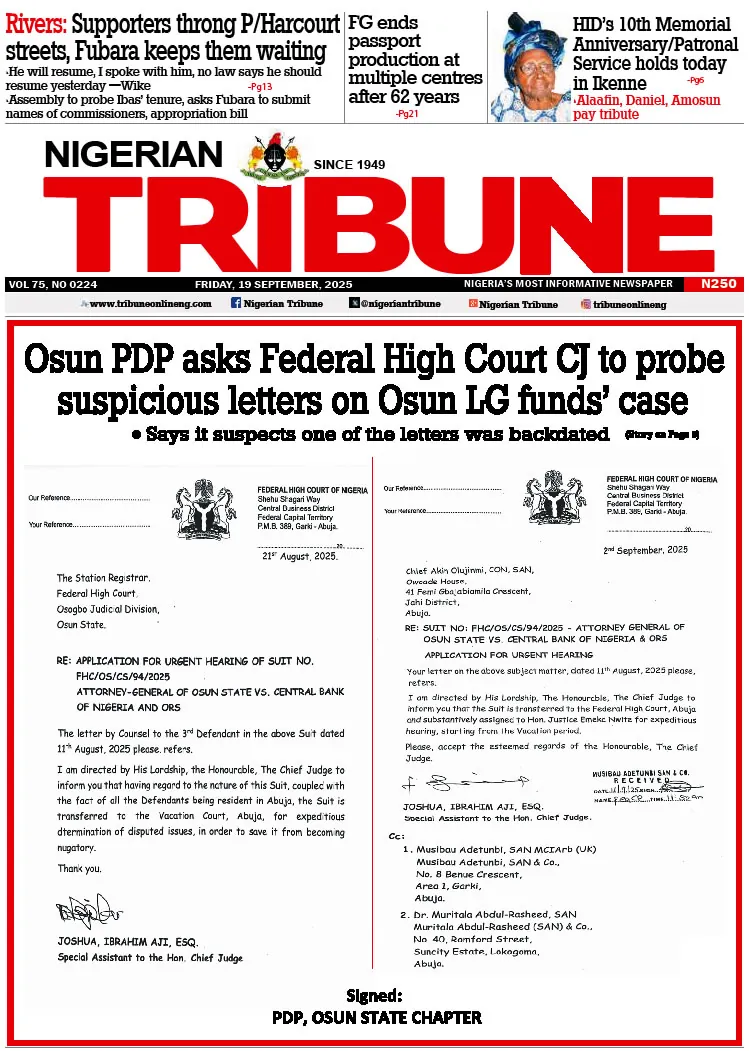AFTER some initial challenges in Al-Madina,h the Prophet (SAW) initiated the construction of the historic mosque which is known today as the Prophet’s Mosque. The mosque is situated on the very spot where the Prophet’s (SAW) camel kneeled on the day the Prophet (SAW) and the Muhajir entered the city of Al-Madinah in the family compound of Abu Ayub al-Ansariy.
The entire land space was replete with the nut fruit trees known as tamr (dates) and they were owned by two young male orphans under the care of As-adu ibn Zurarat. The Prophet (SAW) invited the duo to intimate them of the intention to build a mosque on their portion of land and then offered to buy it. But the orphans turned down the offer, insisting that the land, with every resource on it, was dedicated to the Prophet (SAW) and it attracted no payment of any sort. But the Prophet (SAW) objected to their idea. He then paid them a sum of 10 dinar (an ancient gold coin) which was taken from Abu Bakri’s (R.A.) wealth. The portion also contained graves of dead kuffar (unbelievers in Allah and a good number of palm trees. The graves were evacuated and the pits were filled with sand in order that the entire landscape would be levelled.
Works commenced almost immediately on the site. Bricks were molded from soil and sand. Two entrances were constructed from masonry to serve the building. Palm fronds were used for the roof, and soon the mosque was completed. The height of the walls was a little above the height of a fully grown adult. It is instructive to note that the Prophet (SAW) partook fully in the building process. He was also involved in every bit of fun-making while the tasks lasted. He sang, laughed and threw banters with the other labourers.
He did not prove himself special among the folk. The Prophet (SAW) demonstrated leadership in perseverance, humility, selflessness and wisdom. This is a message that must not be lost on all Muslims who may find themselves in positions of authority. But when the Prophet (SAW) sang, he invoked the rahmah (blessing) of Allah (SWT) onto the Ansar and the Muhajir alike for their unwavering loyalty and dedication. The Prophet (SAW) sang thus: ‘Allahuma La Khaera Ila Khaerul Akhirah Farhamil Ansara Wal Muhajirah (Oh Allah! No other benevolence greater than those which await Your deserving servants on the Day of Recompense. Oh Allah, bestow Your worthy Rahmah onto the Ansar and the Muhajir)’.
It should be noted that Islam has never encouraged any form of indolence. A good Muslim should engage himself in a vocation or trade to avoid livelihood through means that may be classified as Haram (unlawful, forbidden and punishable from the religious viewpoint).
Then, it was considered that Muslims who were with the Prophet (SAW) in Al-Madinah needed to be more guided and organised, particularly when it bordered on as-salat (prayers). This necessitated the Prophet (SAW) to summon all the followers for deliberations on acceptable mode of calling the Muslims to congregational prayers. Of all suggestions proffered, the Muezzin option was adopted for calling the Muslims to prayer on each obligatory solat (prayers) hour. Abdul-Lahi ibn Zaedu al Ansariy, who was one of the Muslims that were dedicated to calling others to prayers, revealed a dream he had to the Prophet (SAW) about certain instruction on what should be the wordings and messages in the Muezzin’s call to prayers. The Prophet (SAW) was divinely guided on this and went on to adopt the content of the statements in the revelation of Abdul-Lahi ibn Zaedu al Ansariy’s dream, as being rendered today and, insha Allah (SWT), as forever. The Muslim faithful the world over should approach the mosque once the Muezzin calls to prayer without delay. There were two of the followers of the Prophet (SAW) that were particularly recognised for the Muezzin function by the Prophet (SAW). They were Bilal ibn Rabah and Abdul-Lahi ibn Maktum (R.A.). It was actually Bilal ibn Rabah (R.A.) who was inspired to have included the exclamatory statement ‘As-salat Khaeir Minah Na’om (prayers duly observed are far more beneficial and rewarding than to stay back at home sleeping beyond the Sub’hi (dawn) prayers)’. The Prophet (SAW) did not condemn the novel inspiration from Bilal ibn Rabah (R.A.).
Read Also: Reps unhappy over non-constitution of NIDCOM board
Followers of the Prophet (SAW) soon began to witness subtle animosities in Al-Madinah from the Jews of the city. Their grouse against the Muslims was that they could not come to terms with the reality of the Prophet (SAW) being the Seal of the Prophets. Also, they rejected the reality that the Seal of the Prophets would not be of Jewish descent but Arab, a descendant of Prophet Isma’il (Ishmael) (AS). The Jews had preferred a prophet from the line of Ishaq (Isaac) (A.S.). Even with all the goodies that could make Islam attractive to the Jews, they felt hurt still. They became enemies of the Muslims.
There came the evils and havoc of the Munafiqin (hypocrites among the Muslims) who were far more inimical to the Muslims and the cause of Islam in Al-Madinah than the Jews. The Munafiqin joined forces with the Jews to unleash terror and ruins on the Muslims. One Abdul-Lahi ibn Ubayy ibn Salul al-Khazrajiy was the point-man of the Munafiqin. The development brought about the necessity for the Muslims as led by the Prophet (SAW) to enter into a peace accord with the two major enemy groups against Islam and the Muslim faithful in Al-Madinah. This is because Islam is for peace and harmony. Islam does not embrace compulsion on anyone to become an adherent to the faith. Thus, a truce was brokered for peace to reign in Al-Madinah.
To compound the situation in Al-Madinah, the Mushrikum (the polytheists, pagans) in Mecca had not stopped tormenting the Prophet (SAW) and his followers, even from far-away Mecca. It was a traumatic experience for Rohsul-Lahi (SAW) and other faithful in Al-Madinah. Ordinarily, the Muslim faithful would have wished to turn the heat back on the enemies, but they were constrained by many of the Qur’an verses with which the Prophet (SAW) was divinely pacified but subtly cautioned not to employ forceful means against these anti-Islam forces. One of such verses in the Glorious Qur’an is cited in Surah Al-Ahqaf, Q46:35:: “Therefore, be patient (O Muhammad SAW) as did the Messengers of strong will and be in no haste about them (disbelievers). On the Day when they will see that (torment) with which they are promised (i.e. threatened, it will be) as if they had not stayed more than an hour in a single day. (O mankind! This Qur’an is sufficient as a clear Message (or proclamation to save yourself from destruction). But shall any be destroyed except the people who are Al-Fasiqun (rebellious against Allah’s Command, disobedient to Allah)?”
But at a stage in the struggle, when the Mushriqkun in Mecca sustained the unprovoked onslaught against the Muslims in Al-Madinah, Allah (SWT), in His mercy, granted the Prophet (SAW) the permission to retaliate any onslaught from any quarters. A particular revelation in the Glorious Qur’an, Surah Al-Baqarah: 190, compelled the Muslims to return the onslaught of the enemies from Mecca with equal weight of force. And when it later became a far more serious animosity from all fronts and forces against the Muslims, even from within and around Al-Madinah, yet another revelation came to the Prophet (SAW) from Allah (SWT) through Surah At-Taubah, Qur’an 9:36.
WATCH TOP VIDEOS FROM NIGERIAN TRIBUNE TV
- Relationship Hangout: Public vs Private Proposals – Which Truly Wins in Love?
- “No” Is a Complete Sentence: Why You Should Stop Feeling Guilty
- Relationship Hangout: Friendship Talk 2025 – How to Be a Good Friend & Big Questions on Friendship
- Police Overpower Armed Robbers in Ibadan After Fierce Struggle






